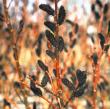37 found, showing page 3 of 3

The 'Schipkaensis' laurel is a large, fast-growing variety that is often used for privacy screening or large hedging. It will reach 12-15' tall and 6-8' wide, but can be pruned to a smaller size. White, bottlebrush blooms appear in spring and attract beneficial pollinators.

The 'Schipkaensis' laurel is a large, fast-growing variety that is often used for privacy screening or large hedging. It will reach 12-15' tall and 6-8' wide, but can be pruned to a smaller size. White, bottlebrush blooms appear in spring and attract beneficial pollinators.

The 'Schipkaensis' laurel is a large, fast-growing variety that is often used for privacy screening or large hedging. It will reach 12-15' tall and 6-8' wide, but can be pruned to a smaller size. White, bottlebrush blooms appear in spring and attract beneficial pollinators.

The 'Schipkaensis' laurel is a large, fast-growing variety that is often used for privacy screening or large hedging. It will reach 12-15' tall and 6-8' wide, but can be pruned to a smaller size. White, bottlebrush blooms appear in spring and attract beneficial pollinators.

The 'Schipkaensis' laurel is a large, fast-growing variety that is often used for privacy screening or large hedging. It will reach 12-15' tall and 6-8' wide, but can be pruned to a smaller size. White, bottlebrush blooms appear in spring and attract beneficial pollinators.

The 'Schipkaensis' laurel is a large, fast-growing variety that is often used for privacy screening or large hedging. It will reach 12-15' tall and 6-8' wide, but can be pruned to a smaller size. White, bottlebrush blooms appear in spring and attract beneficial pollinators.

This variety of 'Black Pussy Willow' grows 6-10' tall and wide and keeps a bushy habit. It will benefit from being pruned back in late spring after blooms have disappeared. The rich, red winter stems are accented by soft, purple-black catkins that are the main ornamental feature of this plant. Branches will turn golden yellow as they age.
37 found, showing page 3 of 3